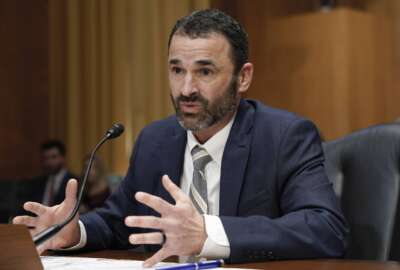IRS commissioner charts year-long progress in agency’s ‘tech-enabled transformation’
The Internal Revenue Service saw a major turnaround in its level of customer service this year, and will continue to deliver on a higher level of service to the...
The Internal Revenue Service saw a major turnaround in its level of customer service this year, and will continue to deliver on a higher level of service to the public, according to the agency’s top leader.
IRS Commissioner Danny Werfel, in a keynote address at the ACT-IAC CX Summit in Arlington, Virginia, said that, prior to his nomination, White House officials – asking whether he’d be interested in the job – told him he’d be in charge of “the most important, tech-enabled transformation of a government agency in U.S. history.”
Werfel took office in March following his Senate confirmation.
“Ten months in, I don’t think there was any hyperbole there. I am realizing that the journey that this organization is on, we are at a critical inflection point,” Werfel said.
The IRS, under the Inflation Reduction Act, has roughly $60 billion to rebuild its workforce and modernize its legacy IT systems over the course of a decade. The funding is meant to correct for more than a decade of austerity budgets.
Werfel said the agency is focused on making both short-term and long-term improvements with the Inflation Reduction Act funding.
The IRS went from answering 15% of incoming calls during the 2022 filing season, to answering 87% of calls during this year’s filing season.
“Once we were awarded the money, now we have to demonstrate that we can spend it wisely and effectively. Otherwise, it will be clawed back,” he said. “So we have an immediate responsibility to demonstrate impact with these funds, as well as a stewardship responsibility to make sure that we’re investing for the medium and long term, so that we’re positioning the IRS for future generations of employees and taxpayers.”
To improve its level of service to taxpayers, Werfel said the IRS is taking a closer look at its employees’ experience, and taking steps to ensure its workforce feels satisfied with their jobs.
“We have to create a better employee experience, which to me has a lot of similarities to the customer experience journey,” Werfel said. What is the employee experience, what’s an employee-centric approach — from the moment we reach out to them to recruit them, to the moment they arrive on campus, or at a facility for their first day on the job? Is their badge ready? Is their computer ready? How is the orientation structured? What’s their training in their first few weeks? And then their career path —how are we in showing that we’re investing in them? And then, what tools do they need in order to get their job done? Do they have the right training, the right technology? Do they have smart bureaucracy, versus challenging bureaucracy to compete with, in order to get their mission done?”
The IRS, under its Strategic Operating Plan, expects to hire about 20,000 total employees by the end of fiscal 2024. It made progress toward its goal last year, when it hired about 5,000-6,000 new hires to staff up its call centers.
The IRS announced in September it plans to fast-track the hiring of more than 3,700 internal revenue agents across the country. Agents focus on complicated tax compliance issues, and are trained to audit large corporations and complex partnerships.
Werfel told Federal News Network in November that it’s been a “very busy fall,” in terms of holding recruiting and hiring events, as well as interviewing and onboarding candidates.
“I would expect hiring activity on the enforcement side to ramp up as we enter into 2024,” Werfel said in the interview.
Here’s a look at what the IRS will see in 2024:
IRS reorganizes its top ranks
The IRS recently announced it’s shaking up the structure of its leadership team for the first time in decades.
The agency is consolidating its two deputy commissioner roles into one position, giving the agency a single second-in-command official.
The agency is also creating four new “chief” roles to prioritize mission areas that are the focus of the roughly $60 billion available under the Inflation Reduction Act to rebuild its workforce and modernize its IT.
The new org chart will go into effect early in the new year. The IRS saw its last major structural change in 2000 under the 1998 Restructuring and Reform Act.
IRS ‘direct-file’ pilot
The IRS is also planning to invite taxpayers from 13 states to test a free, online tax-filing platform that’s run by the agency during next year’s filing season.
The IRS expects several hundred thousand taxpayers across the country will decide to participate in the pilot in 2024.
Those participants will help stress-test the IRS “direct file” prototype and help the agency determine whether to scale up the program for the broader public.
Updated Individual Master File
The IRS next year will also test out a long-awaited update to the Individual Master File, its authoritative data source for individual tax account data.
Werfel said the IRS will turn on a modernized version of the IMF for the first time in April 2024 – after the tax filing season — and run it in parallel with its legacy system.
The IRS, he added, hopes to have the updated IMF up and running by the following filing season.
Copyright © 2024 Federal News Network. All rights reserved. This website is not intended for users located within the European Economic Area.
Jory Heckman is a reporter at Federal News Network covering U.S. Postal Service, IRS, big data and technology issues.
Follow @jheckmanWFED






